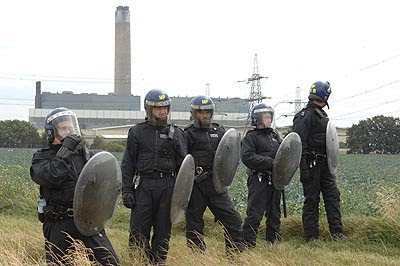
Energy supplier E-ON has announced that it is abandoning efforts to build a new coal-fired power station at Kingsnorth in Kent, which would have been the first new coal burning electricity generating plant to have been built in the UK for decades.
It was to have been part of the government's carbon capture and storage demonstration programme, one of four such plants which the government hopes to build.
In fact, the only coal project left that is currently still under development using carbon capture and storage (CCS), is one to bolt on the technology onto an existing coal power station at ScottishPower's Longannet plant.
There, it is planned that the captured CO2 would be used in Enhanced Coal-Bed Methane Recovery (allowing methane gas to be recovered from coal seams and the CO2 to be stored).
The government's “market sounding exercise" for three of the four demonstration projects ended on 8 October. The Office of Carbon Capture and Storage is now considering this and will publish its response shortly.
The CCS pilots are in line to receive an estimated £1 billion of government funding, mostly under the EU Funding Mechanism “NER300”. This is a pot of 300 million EU ETS allowances set aside for supporting 8 CCS and 34 renewable energy projects. At current prices, each allowance is worth €15.
E.ON reckoned that even with this subsidy, building the Kingsnorth plant would be uneconomic given “current energy prices".
It said it has not withdrawn its application to build Kingsnorth at some point in the future, possibly as one of the later CCS pilot projects, after 2020.
Environmental campaigners are claiming this as a victory. Greenpeace, in a statement, said, “It does underline that right now the economics for new coal simply don’t stack up.
“But we need to make sure the future of dirty coal plants is dictated by climate and energy security needs, not simply the prevailing economic winds.
“That’s why Osborne’s promised Green Investment Bank is so important, and why we need it to be accompanied by tough new rules to put a legal limit on pollution from power stations."
Greenpeace is concerned that three later, second tranche, CCS demonstration plants, which are in line for funding via a "CCS levy" on energy bills, could result in new coal plants being built that only capture around a quarter of their carbon emissions.
But the Government has said it is committed that no new coal-fired power stations will be built without CCS, and emission performance standards. Climate Change Minister Gregory Barker told Parliament last Tuesday that he is working with his Scottish counterparts "to establish an emissions performance standard that would prevent coal-fired power stations being built without the provision of Carbon Capture and Storage (CCS) to enable them to comply with our Emissions Performance Standard (EPS)".
Unlike the first of the four projects in the CCS competition, these three second tranche ones will not receive direct government funding.
CCS is not cheap. A project in Norway, the Mongstad CCS centre, has seen costs rise from an original projection of $700 million to $1.02 billion, Reuters reported at the end of September.
Another recent report, from the Wuppertal Institute, said that with renewables prices coming down, it will be cheaper to invest in these and phase out fossil-burning plants, than in the still technically uncertain CCS.
No comments:
Post a Comment